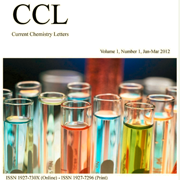 |
1.  |
Carotenoid determination in recent marine sediments - practical problems during sample preparation and HPLC analysis
, Pages: 91-104 Magdalena Krajewska, Małgorzata Szymczak-Żyła and Grażyna Kowalewska |
||
|
Abstract: An analytical procedure for the analysis of carotenoids in marine sediments rich in organic matter has been developed. Analysis of these compounds is difficult; the application of methods used by other authors required optimization for the samples studied here. The analytical procedure involved multiple ultrasound-assisted extraction with acetone followed by liquid-liquid extraction (acetone extract:benzene:water - 15:1:10 v/v/v) and HPLC analysis. The influence of column temperature on pigment separation and the quantification method were investigated – a temperature of 5 °C was selected for the Lichrospher 100 RP-18e column. The pigments in the sediment extract were quantified using a method based on HPLC analysis (at 450 nm) and spectrophotometric measurements (at 450 nm), and extinction coefficients were determined for standard solutions at this wavelength. It is very important to use the value of the extinction coefficient appropriate to the wavelength at which the detection of carotenoids was carried out. DOI: 10.5267/j.ccl.2017.4.003 Keywords: Carotenoids, Sediments, Analysis, Extraction, HPLC
|
|||
2.  |
Three-component reactions of kojic acid: Efficient synthesis of Dihydropyrano[3,2-b]chromenediones and aminopyranopyrans catalyzed with Nano-Bi2O3-ZnO and Nano-ZnO
, Pages:105-116 Maryam Zirak, Mostafa Azinfar and Mosleh Khalili |
||
|
Abstract: Synthesis of pyrano-chromenes and pyrano-pyrans was developed by three-component reactions of kojic acid and aromatic aldehydes with dimethone and malononitrile, catalyzed with nano-Bi2O3-ZnO and nano-ZnO, respectively. Reactions proceeded smoothly and the corresponding heterocyclic products were obtained in good to high yields. Nano ZnO and nano Bi2O3-ZnO were prepared by sol-gel method and characterized by X-ray diffraction (XRD), energy-dispersive X-ray analysis (EDX), Fourier transform infrared (FT-IR), scanning electron microscopy (SEM), and transmission electron microscopy (TEM) techniques. Supporting Bi3+ on ZnO nanoparticles as Bi2O3, is the main novelty of this work. The simple reaction procedure, easy separation of products, low catalyst loading, reusability of the catalyst are some advantageous of this protocol. DOI: 10.5267/j.ccl.2017.4.001 Keywords: Kojic acid, Heterogeneous catalysis, Multicomponent reaction, Solvent-free, Nano-ZnO
|
|||
3.  |
Synthesis of ethyl-3-amino-1-aryl-1H-benzo[f]chromeme-2-carboxylate derivatives promoted by DMAP
, Pages: 117-124 Abbas Ghasemian Zeidanlu, Safoora Sheikh, Jalil Lari and Hooshang Vahedi |
||
|
Abstract: An efficient route, convenient and environmentally friendly procedure for the synthesis chromenes derivatives have been developed via a three-component coupling and one-pot reactions of various aromatic aldehyde with malononitrile or ethyl cyanoacetate and phenols in the presence N,N-dimethylpyridin-4-amine (DMAP) in reflux conditions. In simple reaction conditions, the use of DMAP is explored as an easy workup and a green catalyst for the one-pot three-component synthesis ethyl 3-amino-1-aryl-1H-benzo[f]chromene-2-carboxylate derivatives. DOI: 10.5267/j.ccl.2017.3.003 Keywords: Benzochromenes, Three-component reaction, DMAP
|
|||
4.  |
Synthesis and photoprotective properties of new salicylic and vanillic acid derivatives
, Pages: 125-134 Alicja Wodnicka and Elżbieta Huzar |
||
|
Abstract: A simple one-step procedure for synthesis of new derivatives of phenolic acids was developed. As the starting materials salicylic acid, vanillic acid and alkyl haloalkanoates were applied. The reactions were carried out in N,N-dimethylformamide (DMF) in the presence of anhydrous potassium carbonate. Conditions for regioselective synthesis of target compounds were established. The esters 3a-h were obtained in great yields and were characterized by MS, 1H and 13C NMR spectra. Their photoprotective activity was evaluated in vitro by spectrophotometric method. The study revealed that the tested compounds are moderate UVB absorbers, but could be used to augment the effect of other photoprotective agents. Their SPF values were in the range from 3.63 to 4.26 for salicylates 3a-d and from 3.03 to 3.51 for vanillates. DOI: 10.5267/j.ccl.2017.3.002 Keywords: Phenolic acids derivatives, Salicylates, Vanillates, Photoprotection, Sun protection factor (SPF)
|
|||
5.  |
One-pot multi-component green synthesis of highly substituted piperidines
, Pages: 135-142 Ravi Bansal, Pradeep K. Soni, Jyoti Sharma, Santosh K. Bhardwaj and Anand K. Halve |
||
|
Abstract: An effective and expeditious method of the synthesis of a highly functionalized piperidines, catalyzed by nontoxic, recyclable and environment friendly sodium lauryl sulfate (SLS), via one-pot multi-component condensation of aldehydes, amines and β-ketoesters in water at room temperature, has been developed. This new protocol has advantages such as moderate to high yields of products obtained after simple post reaction workup. Structure of the synthesized compounds 4a–4j have been elucidated based on the 1H NMR, 13C NMR, FT-IR spectroscopy and elemental analysis. DOI: 10.5267/j.ccl.2017.3.001 Keywords: Antimicrobial, Biodegradable, Biopolymer, Limonene, Polysaccharides
|
|||